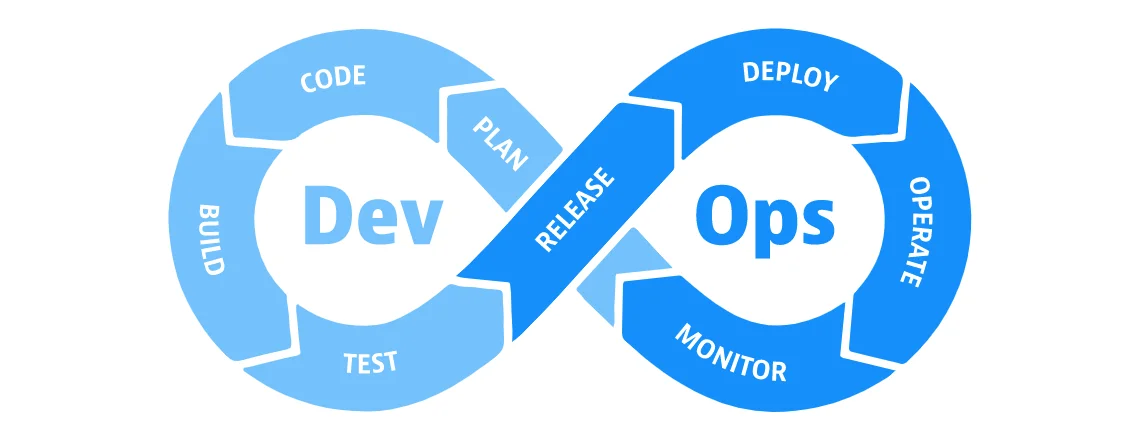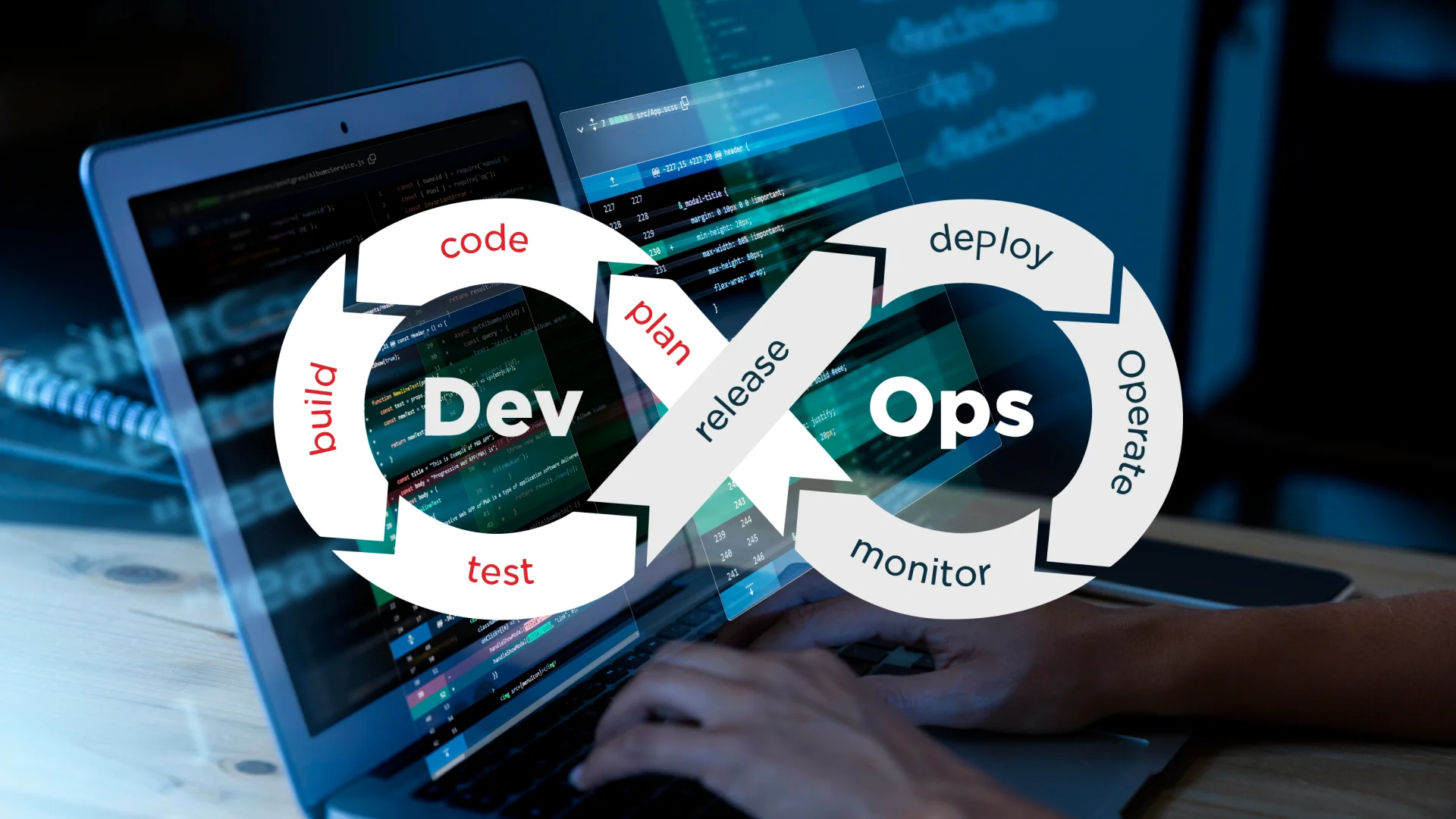How Does DevOps Boost Efficiency in SaaS Product Development?
- DevOps
- January 16, 2024
As apps evolve to meet user needs, DevOps emerges as a crucial force driving their transformation. From enhancing collaboration to automating processes and ensuring continuous delivery, DevOps revolutionizes the SDLC. This blog delves into the role of DevOps in SaaS product development and uncovering best practices tailored for success.
Apps are becoming useful and improving over time, adapting emerging technologies and delivering desired output. DevOps is the transformative force behind this growth, reshaping conventional paradigms and fostering a symbiotic relationship between software development and IT operations.
DevOps is not merely a methodology but a cultural and technological evolution. It follows a collaborative approach and leverages advanced automation, continuous integration, and relentless feedback loops to propel organizations toward deploying high-caliber software with unprecedented speed and reliability.
In this blog, we are going to reveal how DevOps makes apps function better, streamline operations, facilitate collaboration, and boost efficiency. Let us throw light on the topic and reveal the hidden facts and strategies.
What is DevOps?
DevOps refers to a combination of “Development and Operations.” It is a set of practices, cultural philosophies, and tools that aim to enhance collaboration and communication between software development (Dev) and IT operations (Ops) teams.

DevOps manages the software development lifecycle, from planning and coding to testing, deployment, and maintenance. It promotes the use of automation tools to streamline repetitive tasks, reduce errors, and accelerate the software development and delivery pipeline. It includes automated testing, continuous integration, and continuous deployment.
Also read: DevOps & DevSecOps: What Are the Key Differences Between the Two?
Role of DevOps in SaaS Product Development
Statista has estimated that the Software as a Service (SaaS) industry will cross the mark of 232 billion U.S. dollars by 2024. DevOps will play a crucial role in this growth. It will manage important operations and ensure the proper flow in the process. Here is a brief overview of how DevOps will work for SaaS product development.
Conceptualization and Planning
Teams responsible for development and operation collaborate closely with stakeholders to plan the SaaS-based product development and deployment process. They use DevOps to align the project with agile development methodologies, allowing for iterative planning and quick adaptation to change requirements.
Coding
Version Control: Developers take the support of version control systems, like Git, to manage and track changes to the source code, enabling collaboration and maintaining a reliable codebase.
Code Reviews: Developers review the codes to ensure quality and eliminate technical issues early in the process.
Building
Continuous Integration (CI): Developers integrate code changes into a shared repository, and automated CI systems create and test the code, ensuring its relevance and quality.
Automated Build Processes: Automation tools streamline the build process, ensuring consistency and efficiency in creating executable software.
Testing
Automated Testing: DevOps facilitates automated testing throughout the development lifecycle, covering unit, integration, and end-to-end tests to identify and fix issues promptly.
Continuous Testing: Automated testing is integrated into the CI/CD pipeline, ensuring that each code change is thoroughly tested before deployment. Along with it, there are testing processes that DevOps put the product through to achieve optimal performance.
Deployment
Continuous Deployment (CD): Automated deployment processes enable the rapid and reliable release of software changes to production environments.
Canary Releases: DevOps may implement canary releases, deploying changes to a small subset of users first to ensure stability before a full release.
Operate
Automated Operations: DevOps handles routine operational tasks with automation. Automated processes include server provisioning, configuration management, and routine maintenance activities. Automation reduces manual effort, minimizes errors, and ensures consistency in the operational environment.
Monitoring
Real-time Monitoring: Continuous monitoring of SaaS applications helps detect performance issues, security vulnerabilities, or other problems in real-time.
Log Analysis: Analyzing logs and metrics provides valuable insights into application behavior and aids in troubleshooting.
Also read: The Role of DevOps in Mobile App Development
What are the Best DevOps Practices in SaaS Product Development?
Implementing DevOps in SaaS (Software as a Service) product development requires a strategic approach that aligns with the unique characteristics of SaaS. Here are proven DevOps implementation practices tailored for SaaS product development:
1. Process Automation
DevOps works as a skilled conductor of an ensemble of automated tools and workflows, creating a symphony of efficiency. It introduces DevOps tools that automate the code deployment. Instead of manual, error-prone processes, developers can rely on automated pipelines to seamlessly move codes from development to testing and production environment.
2. New Collaboration Culture
DevOps dissolves traditional barriers between development and operations teams, creating a unified force. Instead of working in silos, DevOps developers collaborate closely, share ideas and responsibilities, and provide updates and feedback.
This ongoing conversation keeps everyone on the same page and allows them to respond quickly to changes. Hence, developers don’t just write codes; they actively participate in deployment and operations.
3. Continuous Integration (CI)
Developers submit their code changes to the shared repository multiple times a day. An automated CI system builds and tests the application using these changes. The process ensures smooth integration of new codes with the existing codebase.
DevOps Continuous Integration helps identify integration issues, bugs, and defects early and stabilize the codebase for better functionality.
4. Continuous Delivery (CD)
After the successful integration of CI, the CD pipeline automates the deployment of the application to various environments, such as testing, staging, and production. This process is streamlined and can be triggered automatically or manually.
Continuous Delivery practice accelerates the delivery of new features and updates, reduces the risk of human error in the deployment process, and enhances the overall reliability and predictability of releases.
5. Infrastructure as Code (IaC)
Infrastructure as Code (IaC) refers to the practice of managing and provisioning computing infrastructure through machine-readable script files rather than through physical hardware configuration or interactive configuration tools.
IaC enables developers and operation teams to automate the creation of infrastructure components, including servers, databases, and networking. It is achieved through code scripts written in languages like YAML or JSON.
IaC ensures consistency of infrastructure configuration across different environments, such as development, testing, staging, and production. The same code-set can be used to replicate infrastructure components to minimize configuration discrepancies.
6. Agile and Scrum Approaches
DevOps and Agile share common principles, emphasizing collaboration, customer-centricity, and the ability to respond quickly to changes. DevOps extends Agile practices by introducing automation and collaboration tools to manage the development pipeline.
Scrum operates as an Agile framework that provides a structured way to manage complex software development projects, emphasizing adaptability and collaboration. Scrum aligns with DevOps for better collaboration and continuous improvements and delivers incremental value.
DevOps facilitates automation for testing, integration, and deployment that enhances Scrum and ensures a more streamlined delivery pipeline. Agile and Scrum both prioritize adaptability to changing requirements, and DevOps provides tools and practices that support quick adaptation and feedback.
7. Microservices
Microservices is an architectural style where a software application is divided into small, independent, and loosely coupled services, each responsible for a specific business capability.
It promotes decentralization and enables development teams to work independently on specific services. DevOps supports this decentralization by providing the necessary automation and collaboration tools.
Moreover, Microservices enable horizontal scaling that helps organizations scale specific services independently based on demand. DevOps practices support the scalability provision automating and Microservices deployment.
Microservices offer fault isolation, ensuring that issues in one service do not impact the entire application. DevOps practices contribute to resilience by automating recovery processes and keeping the entire system robust.
8. Test Driven Development (TDD)
TDD is a software development approach where tests are written before the actual code. Its development cycle comprises three steps: writing a failing test, writing the minimum code to pass the test, and refactoring the code while ensuring the test still passes.
On-time testing leads to the early detection of issues and reduces the likelihood of defects later in the development cycle. Also, TDD ensures that each piece of functionality is validated and verified before moving on to the next.
9. Monitoring and Feedback Loops
DevOps tracks various metrics, events, and activities to gain insights into the performance, reliability, and user interactions with the software. It monitors the underlying infrastructure, including servers, databases, and network components, and ensures that SaaS applications operate in a healthy and efficient environment.
Along with it, monitoring tools in DevOps are configured to generate automated alerts when predefined thresholds are breached. These alerts trigger a feedback loop, notifying relevant teams about potential issues that require attention.
When issues are identified through monitoring, DevOps encourages a swift incident response. The feedback loop facilitates collaboration between the development and operations teams and helps them diagnose, prioritize, and resolve incidents efficiently.

When Should SaaS Companies Adopt DevOps?
A SaaS product development company should consider adopting DevOps while facing challenges related to scaling operations, frequent releases, increased collaboration requirements, operational inefficiencies, security concerns, or a desire for continuous improvement. Early adoption during product development can establish efficient workflows while scaling phases and the need for rapid feature releases often prompt the introduction of DevOps.
The cultural shift towards collaboration and continuous improvement, coupled with a focus on resource efficiency, user feedback integration, and responding to competitive pressures, provides further impetus for SaaS companies to embrace DevOps practices.
In conclusion, the decision to adopt DevOps aligns with the company’s growth stage, operational goals, and the imperative to stay agile and competitive in the dynamic SaaS landscape.
Also read: Top Trends and Future Scopes of DevOps
Why Choose MindInventory for SaaS Product Development With DevOps?
MindInventory is your trusted ally in leveraging the power of DevOps for unparalleled innovation, efficiency, and success. Our DevOps practices ensure agility, scalability, and the ability to adapt swiftly to changing requirements, turning your SaaS dreams into a reality. From conceptualization to deployment and beyond, MindInventory offers end-to-end DevOps solutions.
We handle the full-cycle product development process with expertise and precision. Our developers incorporate Test-Driven Development (TDD), Continuous Integration (CI), and Continuous Delivery (CD) to automate processes and avail faster time-to-market and reliable software delivery. Our client-centric approach fulfills your needs and shapes the development process, guaranteeing a product that exceeds expectations.

FAQs on DevOps
DevOps boosts product development and fosters collaboration between development and operations teams. It supports development activities with advanced practices, like CI, CD, automation, real-time monitoring, feedback loops, and development lifecycle streamlining. These practices encourage faster and more reliable software releases.
With the help of DevOps, organizations can reduce release cycles, deliver software updates frequently, and introduce new features and improvements effortlessly. It also promotes teamwork, better collaboration, continuous testing, repetitive task automation, and configuration management, leading to increased operational efficiency.
Agile follows a project management and product development approach and focuses on iterative development, collaboration, and customer feedback. On the other hand, DevOps focuses on the entire development-to-operations lifecycle, including CI, CD, automation, product deployment, and infrastructure.













